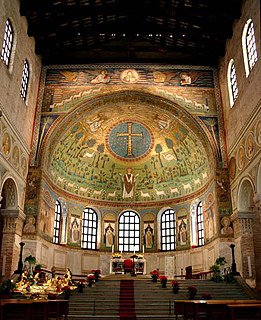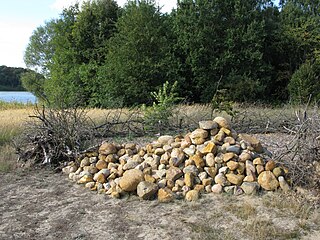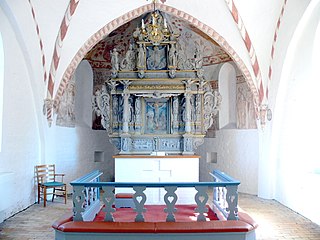
St Bodil's Church is a parish church dating from the 13th century located 4 km west of Nexø on the Danish island of Bornholm.

Væggerløse Church is a Romanesque church in the village of Væggerløse, 7 kilometres (4.3 mi) south of Nykøbing on the Danish island of Falster. Its early 16th century frescos depict the Supper at Emmaus.
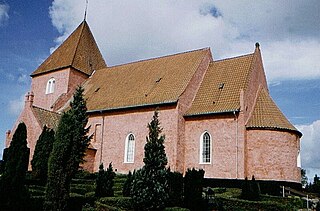
Tingsted Church, located on high ground in the village of Tingsted on the Danish island of Falster, dates from c. 1200. Built in the Romanesque style, it is best known for its frescos from the end of the 15th century.

Aastrup Church, located on the top of a steep hill in the village of Aastrup, 6 kilometres (3.7 mi) southwest of Stubbekøbing on the Danish island of Falster, dates from c. 1200. Built in the Late Romanesque style, it has frescos from the 13th and 15th centuries.
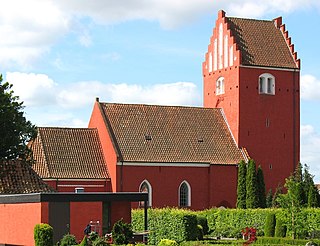
Nørre Alslev Church in the small town of Nørre Alslev in the north of Danish island of Falster dates from at least 1308, a date found on its early frescos. Built in the Early Gothic style and painted pink according to local tradition, it is best known for its fresco of the death dance.

Torkilstrup Church is located in the village of Torkilstrup some 7 km (4 mi) southeast of Nørre Alslev, on the Danish island of Falster. It is built of hewn fieldstone rather than brick, indicating it is one of the oldest churches on the island from before 1160.

Brarup Church is located in the village of Brarup some 5 km (3.1 mi) southwest of Nørre Alslev on the Danish island of Falster. The Late Romanesque church has frescos from various periods including several by the Brarup Master and his workshop from the early 16th century.

Undløse Church is located in the village of Undløse some 17 km (11 mi) southwest of Holbæk in northern Zealand, Denmark. The original part of the Romanesque church derives from the late 12th century. The church is noted for its early 15th-century frescoes and for its elaborate Baroque altarpiece and pulpit, both woodcuts by Abel Schrøder.

Freerslev Church is located in the Danish Diocese of Roskilde, Faxe Municipality in Region Sjælland on the island of Zealand. Parts of the original Romanesque church subsist today although there have been substantial Gothic additions. Primitive 14th-century frescos have been uncovered in the arch of an old window on the north wall.

Toreby Church is the parish church of Toreby on the Danish island of Lolland. It is an unusually large red-brick Romanesque building, the nave and chancel having been extended in the Gothic period with a sacristy and lateral aisle. The tower is late Romanesque. There are frescos from c. 1400 in the sacristy. The carved pulpit (1645) is the work of Jørgen Ringnis.

Østofte Church, located in the village of Nørreballe on the Danish island of Lolland, was built in the 14th century. The Romanesque apse, chancel and nave formed the original building while the tower and porch were added in the Late-Gothic period and the north wing was completed in 1656.
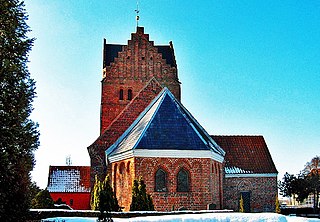
Stokkemarke Church is located in the village of Stokkemarke some 11 km (6.8 mi) northwest of Maribo on the Danish island of Lolland. Dating from the middle of the 13th century it was built in the Romanesque style with later additions in the Gothic period.
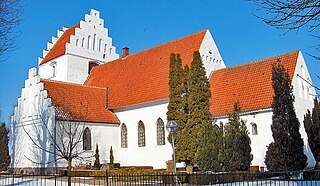
Hunseby Church is located in the village of Hunseby some 3 km north of Maribo on the Danish island of Lolland. Built in the middle of the 12th century, the church has a Romanesque chancel and nave and a Gothic tower.

Sandby Church is located in the village of Sandby some 7 km northwest of Nakskov on the Danish island of Lolland. Dating from the middle of the 13th century, the church has a Romanesque chancel and nave and a Late Gothic tower.
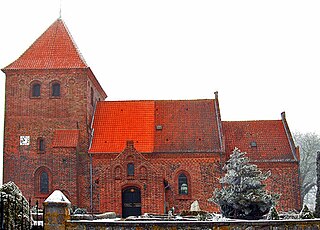
Tågerup Church is a Romanesque parish church located 4 km southeast of Rødby on the Danish island of Lolland. Dating from the beginning of the 13th century, its nave is richly decorated with early 16th-century frescos painted by the Brarup workshop.
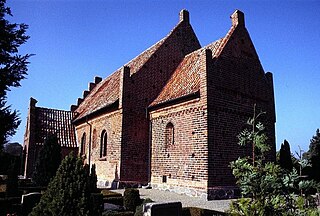
Olstrup Church is a Romanesque church in open country west of Errindlev in the south of the Danish island of Lolland. There are 16th-century frescos of the Last Judgment on the chancel arch with Christ sitting on a rainbow.
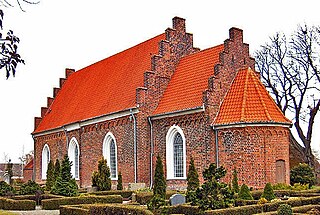
Tillitse Church is a Romanesque building west of the village of Dannemare, some 8 km (5.0 mi) south of Nakskov on the Danish island of Lolland. Built of red brick in the first half of the 13th century, it has an intricately carved auricular altarpiece created by Jørgen Ringnis in 1642. An 11th-century runestone stands outside the church entrance.

Arninge Church is a Late Romanesque church in the little village of Arninge, some 8 km (5.0 mi) south of Nakskov on the Danish island of Lolland. Built of red brick in the 13th century, it has an intricately carved auricular altarpiece created by Henrik Werner in 1644.
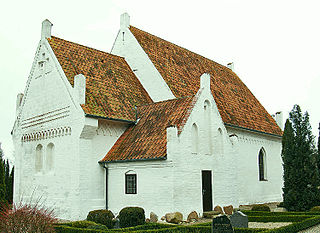
Gloslunde Church is a Romanesque church east of Dannemare, some 13 km (8.1 mi) southeast of Nakskov on the Danish island of Lolland. Now whitewashed, it was built of red brick in the 13th century.
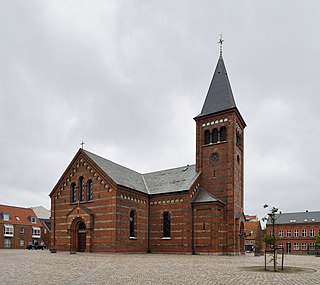
The Church of Our Saviour is a parish church in Esbjerg, Denmark. Completed in 1887 to a design by Axel Møller, it was the first church to be built in the rapidly growing new town.





